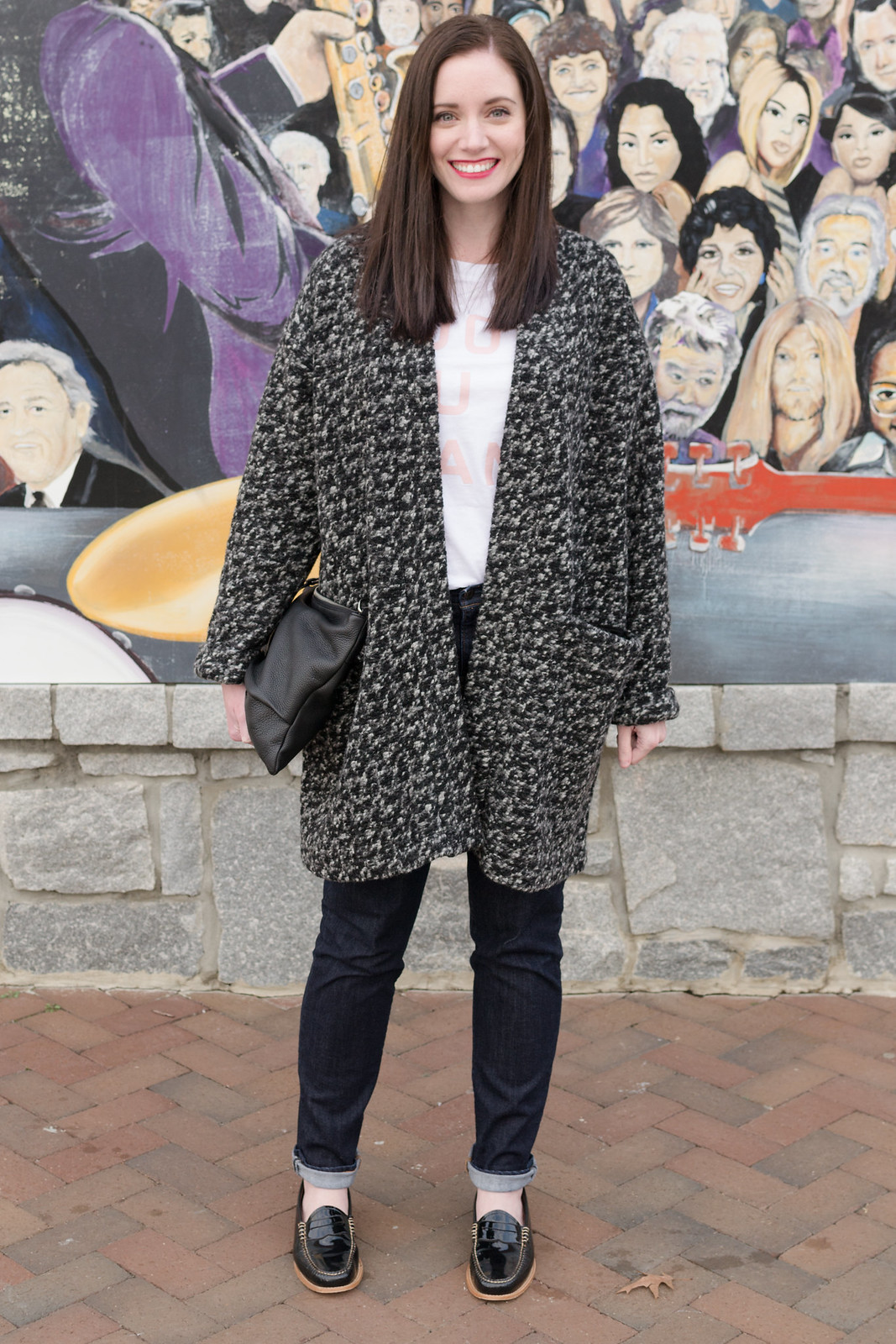I am currently working on my third button-front shirt (reviews to come) and I have begun experimenting with flat-felled seams. They are the seams one generally finds on the inseam of jeans and on the shoulders of dress shirts. They are sewn two to three times (depending on the technique) and offer more strength and stability than a traditional seam.
While I was making a button-front muslin for DFH (as my darling future husband will now be called), it occured to me I could use French seams and sew them down to give the look of his other shirts. I didn't yet know what they were called or that what I had done is actually one of two methods for creating the seam.
With a bit of research, I discovered that I had done them correctly but that there was also a second way to make them. The second method involves sewing your seam as normal, trimming the back seam allowance, folding the uncut allowance around the cut one and sewing them down. Admittedly, this is a faster method as it has one less line to sew. I like both methods in different applications.
For me, the French seam method is much easier to work with than the cut method when working on a curve, like a shoulder. I feel it offers greater control as I'm creating the seams. (Of course, I'm terrible at folding an arch.)
The cut method certainly has its place too. I like that you can sew a garment as normal and then decide to use a flat-felled seam, since both a straight seam and this flat-felled seam are started the same way. So, if you're sewing along and decide you need more strength in an area, you easily add it. It is also perfect on seams where you stop at a certain point to create a slit. In this case, you would sew the first seam, create the slit using narrow hems, and then continue with the flat-felled seam.
I highly recommend playing with both methods the next time you create a button-front shirt. Let me know which you prefer! x
While I was making a button-front muslin for DFH (as my darling future husband will now be called), it occured to me I could use French seams and sew them down to give the look of his other shirts. I didn't yet know what they were called or that what I had done is actually one of two methods for creating the seam.
With a bit of research, I discovered that I had done them correctly but that there was also a second way to make them. The second method involves sewing your seam as normal, trimming the back seam allowance, folding the uncut allowance around the cut one and sewing them down. Admittedly, this is a faster method as it has one less line to sew. I like both methods in different applications.
For me, the French seam method is much easier to work with than the cut method when working on a curve, like a shoulder. I feel it offers greater control as I'm creating the seams. (Of course, I'm terrible at folding an arch.)
The cut method certainly has its place too. I like that you can sew a garment as normal and then decide to use a flat-felled seam, since both a straight seam and this flat-felled seam are started the same way. So, if you're sewing along and decide you need more strength in an area, you easily add it. It is also perfect on seams where you stop at a certain point to create a slit. In this case, you would sew the first seam, create the slit using narrow hems, and then continue with the flat-felled seam.
I highly recommend playing with both methods the next time you create a button-front shirt. Let me know which you prefer! x






Hi Jennifer! I would love it if you sent me a teeny swatch of the Lilly fabric after you cut. Send me an email when you're ready and I'll give you my address. Thanks!
ReplyDelete